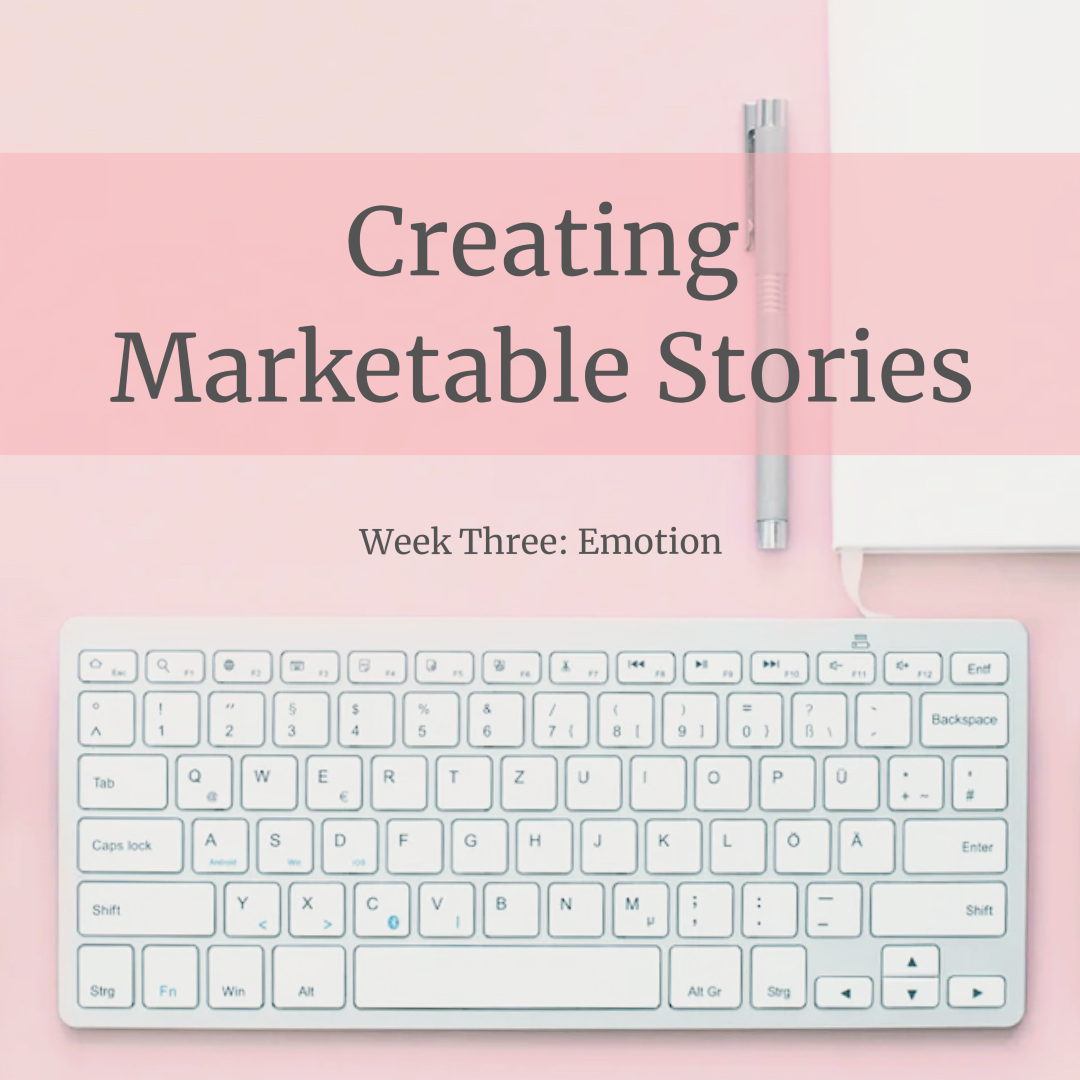Creating Marketable Stories ~ Week Three
Week 3: Emotion
The most marketable books have strong emotion, and by strong emotion, there doesn’t necessarily need to be fighting, stomping off, and pages of sobbing. But the reader needs to feel something. If the main characters experience emotions throughout the book, the reader will be invested in those characters and unable to stop reading until they find out what the characters need to be happy and whether or not they get it.
The main way to achieve this is through conflict. If you missed our Author’s Corner post on conflict, click the button below to revisit it before continuing with the rest of the post.
What makes a story marketable is when that emotion is threaded through the entire book from the very beginning.
The character should be rooted in his/her particular emotions and beliefs in each part of the book. As he/she is responding to the plot and other characters, that emotion can come through in his/her gestures, actions, words, sensory feelings, and thoughts.
Let’s take a closer look at this by using an example:
Alice waited in the airy hotel lobby for Sam, her heart hammering, every nerve in her body on high alert. She clasped her hands so tightly together that her knuckles turned white. Please be here, she silently prayed.
“Do you need anything ma’am?” the bellman asked just before boarding a second elevator.
“No,” she nearly snapped but got herself together. “No, thank you.” She offered an uneasy smile and the golden doors shut on the man.
The ping of another elevator reaching her floor sent her into a mental tailspin of what she would say to Sam, how she could explain. The doors swooshed open and her shoulders fell. A woman stepped past her and the doors closed once more.
On a scratch sheet of paper (without peeking at the answers below!), write down these words, leaving space between them:
Gesture(s)
Action(s)
Dialogue and/or Descriptor(s)
Sensory Feeling(s)
Thought(s)
Now, see if you can pinpoint the part of the passage that shows each of the ways the character emotes for the list that you’ve just written. Then read below.
We could have simply stated that Alice waited nervously for Sam to come out of the elevator. But by adding in gestures, actions, dialog and/or descriptors, and thoughts, we’ve now built up that emotion for the reader.
How many of these did you find?
Gesture(s):
She offered an uneasy smile
her shoulders fell
Action(s):
She clasped her hands so tightly together that her knuckles turned white.
Word(s):
she nearly snapped but got herself together
Sensory Feeling(s):
her heart hammering
every nerve in her body on high alert
Thought(s):
Please be here, she silently prayed.
a mental tailspin
Not every moment requires all five of these, but the more you add, the more tension that moment will have. So as you’re writing, you’ll want to determine how important that moment is and then feed in as much of the above as necessary to achieve the desired level of tension.
This will make the reader feel what the character is also feeling, and create a story that your reader (or editor or agent) will not be able to put down.
Join us next week as we talk about the author’s voice and how to make your own voice as strong as possible.
© Jenny Hale, 2023
